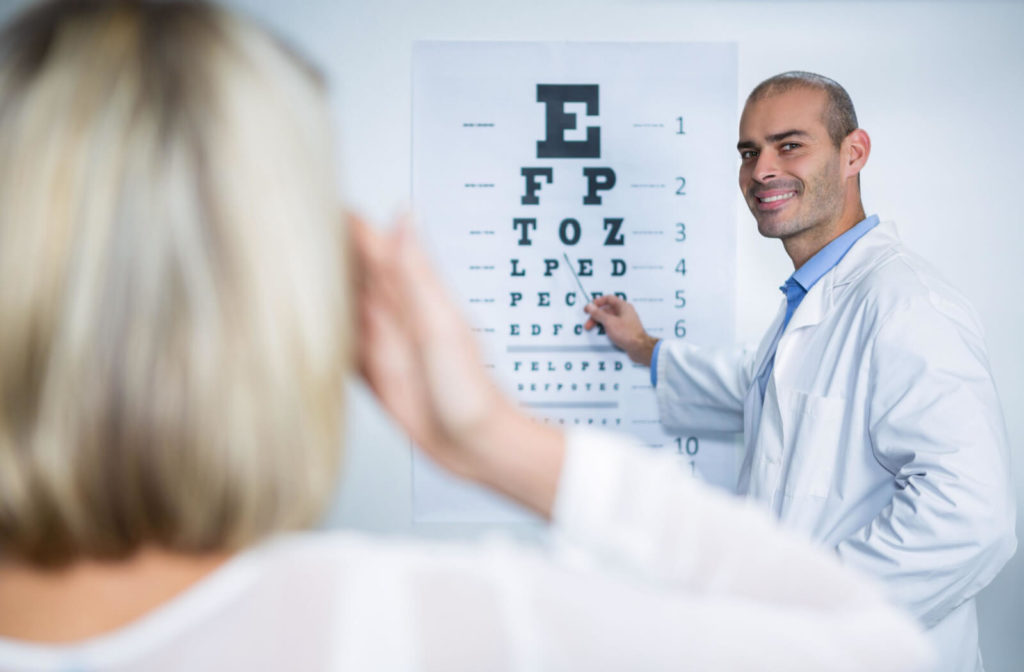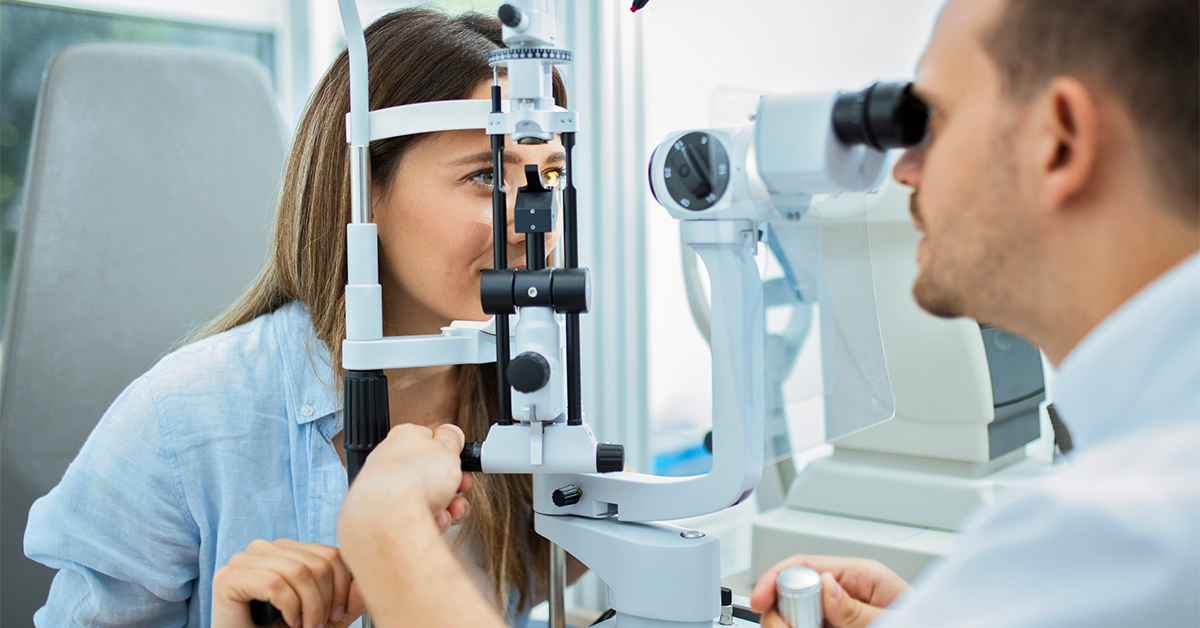Recognizing the Duty of Your Eye Doctor in Preserving Vision
Recognizing the Duty of Your Eye Doctor in Preserving Vision
Blog Article
Exploring the Most Recent Technical Advancements in Optometry and What They Mean for Eye Doctors
From the accuracy of Optical Comprehensibility Tomography to the nuanced understandings used by AI-driven diagnostic tools, these advancements are setting brand-new standards in client assessment and therapy. As these improvements penetrate the practice, optometrists are faced with the difficulty of accepting these tools to enhance client outcomes.
Innovations in Diagnostic Tools
Progressing the field of optometry, innovations in analysis devices have revolutionized the means eye care professionals assess and detect visual problems and eye conditions. The past years has actually witnessed considerable technical improvements, making it possible for even more comprehensive and accurate analyses.
Another trick technology is the introduction of innovative corneal topography systems, which map the surface area curvature of the cornea with precision. These devices are especially beneficial for fitting contact lenses and diagnosing corneal problems. In addition, digital retinal imaging has transformed traditional ophthalmoscopy, using detailed, scenic views of the retina that help with thorough aesthetic exams.
The growth of wavefront aberrometry has actually likewise been essential, making it possible for the evaluation of refractive mistakes with unequaled precision (Optometrist Chino). This modern technology aids in customizing corrective lenses and improving surgical end results for refractive surgical procedures. Jointly, these diagnostic advancements empower optometrists to provide exceptional person treatment, making certain early intervention and customized treatment methods, inevitably boosting visual health and wellness outcomes
AI in Individual Monitoring
Building on the foundation of innovative analysis tools, the consolidation of artificial intelligence (AI) in client management represents a transformative leap for optometry. AI systems are significantly used to boost effectiveness, precision, and personalization in individual treatment.
In addition, AI-driven systems help with streamlined client communications and management procedures. Automated scheduling, digital appointments, and customized follow-up strategies not just improve patient satisfaction however additionally optimize time monitoring for practitioners. These systems can triage patients based on the seriousness of their conditions, guaranteeing that those in essential requirement receive prompt attention.
Moreover, AI boosts decision-making by giving optometrists with evidence-based referrals and treatment pathways. By incorporating information from digital wellness records, AI devices provide understandings that inform professional decisions, reducing the danger of errors and boosting individual outcomes. As AI remains to advance, its duty in client monitoring will likely broaden, improving the landscape of optometric treatment.
Advancements in Retinal Imaging
In the realm of optometry, retinal imaging has actually observed remarkable technical innovations that are enhancing diagnostic capabilities and patient care. Advancements such as Optical Comprehensibility Tomography (OCT) and fundus digital photography have changed just how eye doctors imagine and assess the retina. OCT, in specific, offers high-resolution, cross-sectional photos of the retina, permitting the detailed exam of its layers. This ability is very useful for early discovery and monitoring of problems like glaucoma, diabetic retinopathy, and age-related macular deterioration.
Boosted imaging methods like OCT angiography are further refining analysis precision. This non-invasive method maps blood flow in the retina, supplying critical understandings into vascular health without the need for color shots. In addition, adaptive optics innovation is being incorporated right into retinal imaging systems to remedy ocular aberrations, delivering unmatched photo clarity. Such advancements help with the identification of min retinal changes that can symbolize disease development.
Moreover, advancements in synthetic knowledge are boosting retinal imaging by making it possible for automated analysis of huge datasets. These systems help eye doctors in identifying patterns a sign of pathology, thereby boosting analysis precision and performance. Jointly, these technologies are changing retinal imaging right into a cornerstone of contemporary eye treatment, boosting end results and increasing healing opportunities.
Teleoptometry's Growing Role
Teleoptometry is progressively ending up being an important part of eye treatment, driven by developments in data and analysis tools. As optometry accepts electronic change, teleoptometry facilitates remote consultations, permitting optometrists to extend their solutions past conventional limits. This is particularly helpful in country and underserved areas where access to specialized eye care is often limited. By leveraging high-resolution video conferencing and progressed retinal imaging, optometrists can conduct thorough eye examinations from afar, ensuring prompt medical diagnosis and therapy.
The assimilation of artificial intelligence (AI) further boosts teleoptometry, allowing the evaluation of aesthetic data and aiding in the detection of ocular problems such as glaucoma and diabetic person retinopathy. AI-powered algorithms can rapidly analyze complicated imaging information, supplying optometrists with important insights that bolster medical decision-making.
Furthermore, teleoptometry sustains connection of care through seamless combination with electronic wellness records (EHRs), enabling eye doctors to keep detailed individual backgrounds. This ensures that people receive consistent and customized care even when seeking advice from with different professionals.
In spite of these benefits, difficulties stay, consisting of ensuring data safety and security and taking care of patient assumptions. However, teleoptometry represents a significant stride towards more accessible, efficient, and patient-centered eye treatment. As technology develops, its role is positioned to increase additionally.

Future Trends in Eye Treatment
A myriad of cutting-edge patterns is readied to improve the future of eye treatment, driven by technological developments and the evolving needs of clients. One significant trend is the integration of fabricated knowledge (AI) in diagnostics, which assures to enhance the accuracy and effectiveness of eye assessments. AI formulas can evaluate large amounts of data from retinal pictures, potentially discovering problems like diabetic person retinopathy and glaucoma earlier than typical approaches.
Furthermore, customized medication is acquiring grip in optometry, with Homepage hereditary testing informing personalized treatment strategies. This method aims to maximize client end results by tailoring interventions to private genetic accounts. Wearable technology, such as wise contact lenses, is additionally imminent, supplying real-time tracking of intraocular stress or glucose degrees, thus supplying continuous understandings into systemic and eye health and wellness.
The fostering of enhanced fact (AR) and virtual fact (VR) in training and individual education is one more arising trend. These modern technologies offer immersive experiences that can improve understanding and abilities both for optometrists and clients. As these trends evolve, optometrists need to remain abreast of technical innovations to give advanced treatment, making certain improved individual end results and fulfillment in the vibrant landscape of eye treatment.
Conclusion

Jointly, these diagnostic developments empower eye doctors to provide exceptional individual care, ensuring early intervention and customized therapy techniques, eventually improving aesthetic health and wellness results.

As these modern technologies continue to develop, optometrists should adjust and include them into method, eventually optimizing operations efficiency and elevating the requirement of eye treatment provided to clients.
Report this page